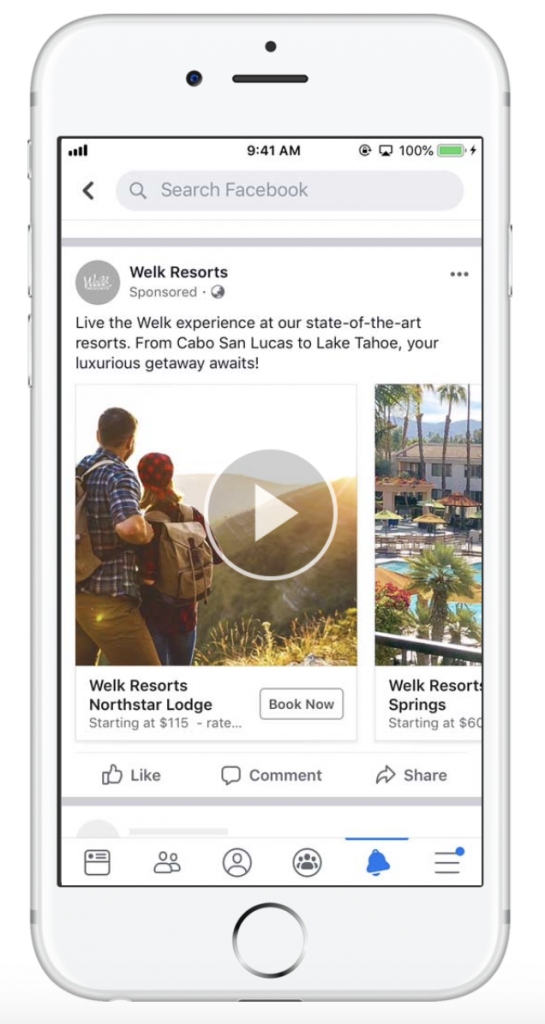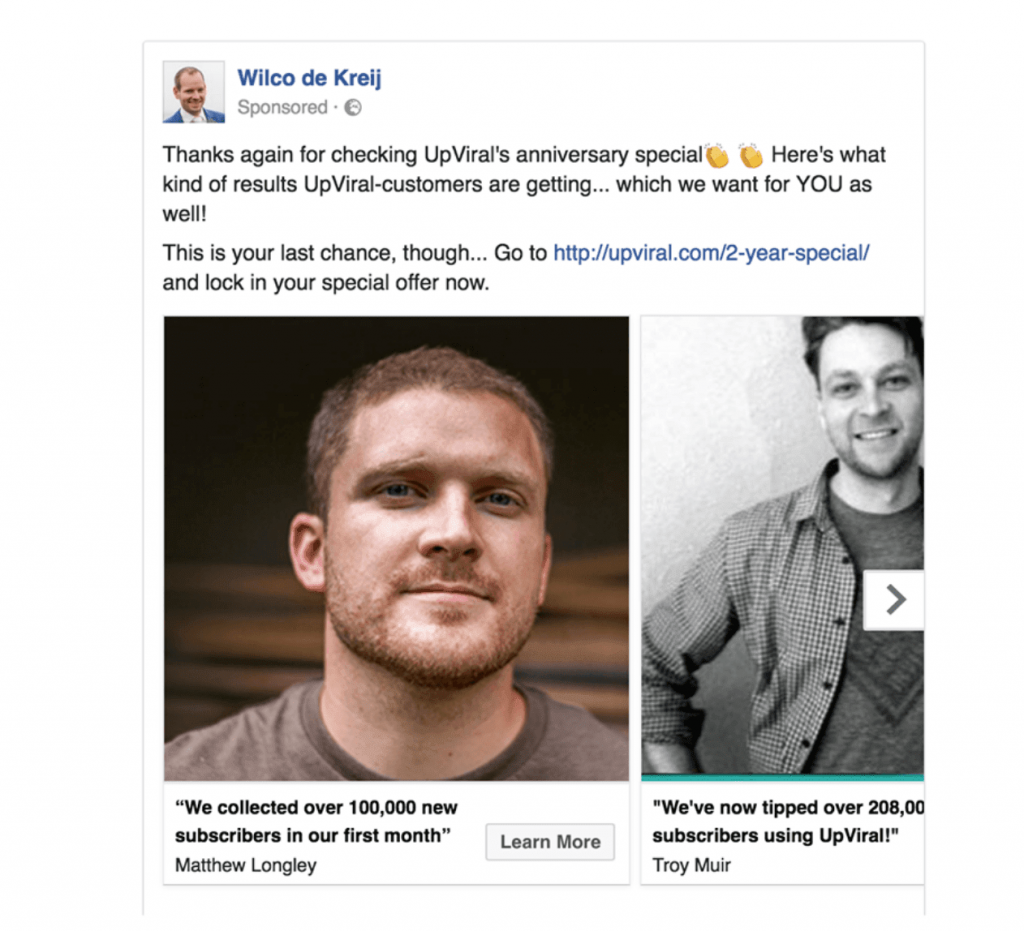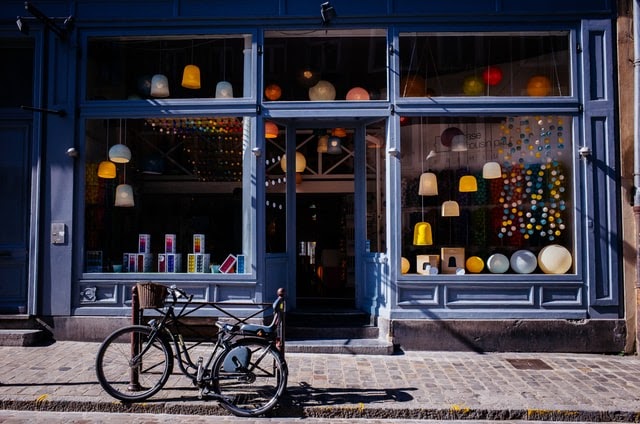Are you here because you want to know if Facebook ads work?
Facebook ads are effective in getting your brand in front of your potential customers.
Mark Zuckerberg, Facebook’s founder, and CEO said, “We remain focused on building services that help people stay connected to those they care about.”
Their Fourth Quarter and Full Year 2019 Results report the following:
- 50 billion monthly active users as of December 31, 2019
- 66 billion daily active users as of December 2019
Whether you own a brick and mortar store or do business online, it doesn’t matter. There are plenty of ways to drive sales — if that’s what you’re struggling with.
If you feel that you haven’t been achieving good ROI, this article is for you.
?100% Free: Our Facebook Ads ROI Calculator>>
How to Increase Sales With Facebook Ads: 8 Strategies
Before we dive into some of the best Facebook ads tips to drive sales, keep in mind that FB ads are not a get rich quick scheme.
1. Start with the right offer.
The most basic (yet often ignored) principle in running a successful ad is choosing the right offer.
Because while you can execute various Facebook ads tricks, people will not buy if they don’t find your product compelling.
Ask the following questions:
- Does my offer help solve a real problem they’re experiencing?
- Is it practical to use?
- Is it currently in-demand? (If your product is seasonal)
Most importantly, create a buyer persona. A buyer persona is a profile that describes who your ideal customer is.

You can simply write down the details of your audience’s persona on a piece of paper. HubSpot also has a tool for generating personas. You might want to check it out.
2. Install the Facebook pixel.
Ever heard of the Facebook pixel? It’s a piece of code that tracks visitor activity on your website. (Here’s more about the FB pixel and how to install it.)
Considering the wealth of information that the pixel provides, you’ll be able to:
- Know your visitors better.
- Identify whether people added to their shopping cart, completed a purchase, searched for something on your website, and more.
- Show the right ads based on your audience’s readiness to buy — since you’ll know what stage they’re at in the sales funnel.
- Target Lookalike audience — people who are similar to your existing customers.
HealthKart, an Indian nutrition brand, generated a 50% increase in sales for its MuscleBlaze product. One of the things they did was to use the information from their Facebook pixel to reach new customers.

Image credit: Facebook for Business
3. Remarket to your target audience.
For those of you who are unfamiliar, remarketing (or retargeting) works this way: You show ads to people who already interacted with your business.
As an entrepreneur, you’ll agree that it’s easier to convince people who already know you to complete a purchase — versus strangers (a cold audience). Get what I mean?
Audiences who you already have a relationship with include:
- People who walked into your physical store
- Your email subscriber list
- Facebook users who’ve had a conversation with you in Messenger
- Those who interacted with your Facebook page
- Regular blog visitors
?If you haven’t tried ConnectRetarget, it’s a behavior-based retargeting tool that enables complete beginners to set-up profitable retargeting campaigns.
4. A/B test your ads.
Split testing is a data-driven strategy that exponentially improves the performance of your FB ads. Also called A/B testing, it entails testing different variations of your ads to see which version performs best.
But what kind of things can you split test?
Anything. That includes your target audience, headlines, post text, description, image/video, call-to-action button, and more.
In the example below, Shopify keeps everything constant in both ads — except for the post text. One version is shorter than the other.

Image credit: Facebook Ads Library
We recommend (and Facebook does too) testing one variable at a time. By doing this, you’ll know which variable increased your conversions.
Related: 23 Simple Split Tests to Optimize Your Facebook Ads
5. Use a carousel ad format.
Instead of showing a single image or video, why not show multiple images or videos in your ad?
Facebook’s carousel format makes your ad more interactive and engaging. People will be able to see your product variations or different angles of one product. Some businesses also use a carousel format to tell their brand story or demonstrate how a product works.
With this format, you can display up to 10 images or videos — with their individual links.
Here’s an example of a carousel ad from TravelClick, a trusted hotel partner:

Image credit: Facebook for Business
TravelClick retargeted people who visited Welk Resorts’ website but had not booked in the past 30 days.
Using a carousel format, TravelClick featured various images of Welk Resorts. This helped lower the cost per booking and increased the return on ad spend.
Note: The carousel format supports various objectives including Conversions, Catalog Sales, and Store Traffic.
6. Incorporate social proof.
Oftentimes, we judge the value of something based on what others say about it.
For example, before booking a hotel, you first check some customer reviews. Instinctively, you’d go for the one that has the most positive reviews, right?
This is what social proof is all about. It’s a psychological principle in which people are persuaded by something based on whether others like it or not.
Previously, I ran an ad to promote UpViral’s anniversary special. I retargeted people who visited my sales page but did not purchase.

Of course, running this “social proof” ad was just one of the things I did for the anniversary special. But it’s my best performing ad because it effectively showed the benefits of UpViral and gained people’s confidence without being salesy.
(It helped me generate a healthy 2,330% ROI!?)
Testimonials are a powerful form of social proof. If you’re not using your testimonials in your ads, you might want to consider it now.
7. Try different psychological tricks.
Standing out amidst business competition is tough. But psychology makes it possible. Here are some must-use psychology hacks:
- Leverage scarcity – Tell your audience that they have a few days or hours left to get your offer… or that your discount lasts for a limited period.
- Use faces to convey emotion – Use faces of people to portray the right emotion of your ad. For example, if it’s a travel ad, show the face of someone who appears to be very excited about the trip.
- Color psychology – Some colors evoke certain emotions. For example, red can mean excitement, danger, or love. Yellow means cheerfulness.
8. Use the Store Traffic objective to boost offline sales.
How to increase sales with Facebook ads offline? As mentioned earlier in this article, you can also use Facebook ads to drive more visits to your stores.
⚠️Note: Facebook has temporarily disabled the store traffic objective to prevent the spread of the coronavirus (COVID-19).

Before you’re able to create store traffic ads, you need to add your store location manually to Business Manager. Double-check the details to make sure that the address (street, city, zip code, and country code) is correct.
Another success story:
Pier1, a retailer that focuses on imported home decor, used the store traffic ad objective to run video and photo ads. Their goal was to encourage holiday shoppers to visit their store locations and increase in-store sales.
They gained a 5% increase in in-store traffic.
?100% Free: Our Facebook Ads ROI Calculator>>
Wrap Up
Of course, you can use one or a combination of the strategies above to run Facebook ads that convert and sell.
While implementing them, keep track of your key metrics so that you will know whether your ads are performing better.
Thanks for reading this article!
?Need tools to scale your Facebook ad campaigns? Check out our solutions.

